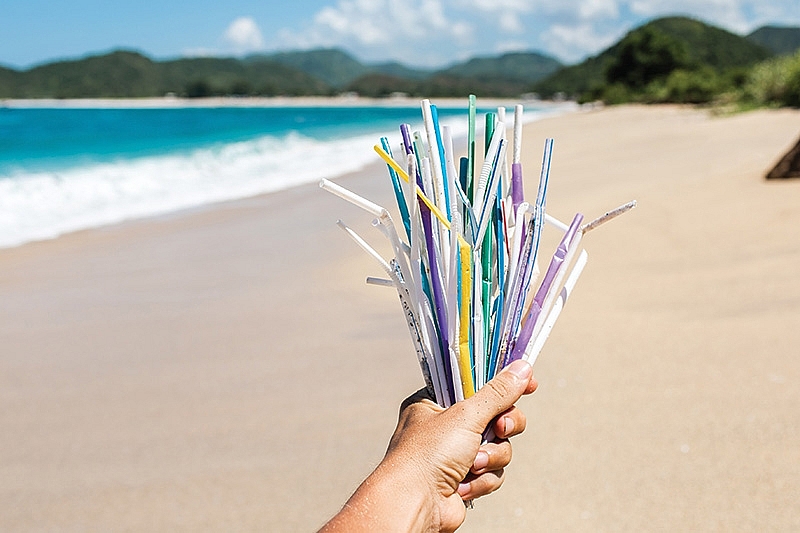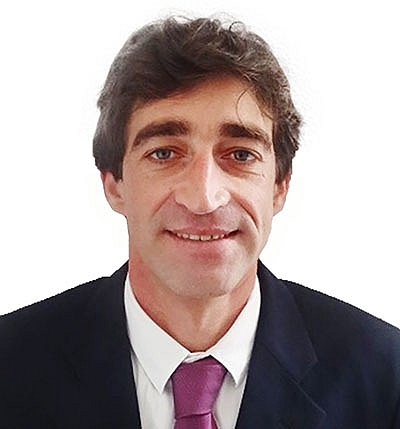Adding plastics to the circular economy
 |
| Teams across the globe are working to contain the damage done by plastic waste, Photo: Shutterstock |
It was in pre-Columbian Mexico that polymers were used for the first time, evolving to the present day. Initially the industry developed synthetic polymers with cellulose and later with the use of petroleum. This evolution allowed polymers to be easier to produce, making it an essential and indispensable material for all forms of use.
 |
| Miguel Santos |
Plastic is possibly one of mankind’s best discoveries, but the problem is in the way we produce and consume it. From as far back as 1960, there began to be an awareness of the plastic waste associated with environmental problems.
It is estimated that millions of tonnes of plastics are introduced daily into nature, with very high impact costs on ecosystems, the economy, and health. Plastics production requires enormous pressure on nature, due to the extraction of high amounts of petroleum to transport to production sites and in the production of petrochemicals where pollution reaches a large scale through the production of energy, ethylene, or soil contamination. Plastic waste represents the end of the product´s life.
There are few materials available that do not contain a percentage of plastic. All materials have a useful lifetime in the hands of consumers, and then are abandoned in nature or deposited in dump bins.
Contrary to what one might think, it is not only when abandoned in nature that plastics are harmful to the environment and health. Simply thrown into bins only removes plastic waste from the human view in its original form. It then goes into the incineration processes, or landfills, or into rivers and oceans. In the case of oceans, the currents concentrate the plastic in five distinct areas of the planet. To stop the problem, a plan is underway to rid the ocean of these plastics.
Identified as a key priority in the European Commission Action Plan on the Circular Economy, the plan has the potential to bring new opportunities for innovation, boost countries’ competitiveness, and create new jobs, if facilitated and driven by enabling policy frameworks. Worldwide problems, such as waste and pollution harming ecosystems and fisheries, filling up landfills, clogging urban water systems, have contributed to global warming, and have negative impacts on human health.
Blocs working together
As a hotspot for these issues, Southeast Asia’s contribution to plastic pollution of the oceans over recent years has steadily increased. Tackling the problem by addressing changes in policy and legislation on plastics are seen as the most efficient ways to bring solutions.
With longstanding experience on waste management and the circular economy, in its recently adopted Plastics Strategy, the European Union has committed to assisting other regions in shifting towards a circular economy for plastics.
Both regions, the ASEAN and the EU, have jointly agreed to collaborate finding a solution and tackling these issues. Under this collaborative framework, the EU and the ASEAN Secretariats launched a regional gap-analysis on the state of the circular economy for plastics across ASEAN member states. The analysis, conducted by a team of experts from the Institute for Global Environmental Strategies with support from the EU, developed a knowledge base for follow-up actions by the EU to inspire and assist circular economy approaches to plastic issues in the Southeast Asian region.
It is important to facilitate the negotiation of a regional framework agreement and the development of regional circular economy guidelines for plastic pollution, followed by the support to develop technical standards for plastics, recycled plastics, and products made of plastics.
The sectoral dialogue on the circular economy in the region will be further enhanced through the sharing of EU experiences on waste and plastic strategy in alignment with the upcoming Partnership Instrument project on marine litter, and in advising interested ASEAN members on changes in policy and legislation on plastics, plastic waste, and single-use plastics.
Innovative answers
In 2013 the Ocean Cleanup, a non-governmental environmental organisation headquartered in the Netherlands, was founded by Boyan Slat, a Dutch inventor, entrepreneur and aerospace engineering student. The main goal of the team was the development of a technology capable of extracting plastics and derivatives from the oceans. System 001 or “Wilson”, the first system, was implemented in the Great Pacific Garbage Patch last year between California and Hawaii, with the particularity of being a passive system – that is, it accompanies the ocean currents in order to capture the plastic that circulated while drifting in the oceans.
This innovative system is unique on the planet, as it is composed of a float about 600 metres long and an attached skirt at the bottom with three metres’ depth. The float tube stabilises the system and prevents the garbage from rising and the skirt does not allow it to leave, ensuring the plastic is accumulated inside the U-shaped system.
Given that the method and technology used is in constant development, the engineers of the Ocean Cleanup recently encountered some problems. System 001 did not maintain enough speed, causing some plastic to leave the system again. To solve this, a new design without stabiliser frames, system 001/B, was released in June. Ocean Cleanup aims to clean approximately 50 per cent of the Great Pacific Garbage Patch within the next five years.
After initial studies of the plastic taken from the ocean, the Ocean Cleanup team concluded that it can be recycled and transformed into products with high quality, using recycling and introducing plastics into a circular economy. In the perspective of framing recycling into an economic model, it is found that it presents in its genesis strong roots based on the circular economy model.
The circular economy breaks with the linear economy in the repetitive reuse of products and raw materials, with recycling fitting perfectly as one of the first stages of the closed-loop process.
By recycling plastic at the end of its life cycle into new and reusable plastic to re-enter production lines and transforming it into final products and consumables, we are talking about a circular economy.
Recycling is an alternative process to the production of plastics in origin offering environmental and economic gains. The German company Krones AG, which specialises in supplying bottling and packaging lines for the beverage industry, developed in 2006 a highly-effective technology for recycling of polyethylene terephthalate, a form of polyester.
The technology presented by Krones is based on state-of-the-art plastics recycling, with the ability to recycle full-use, food-grade decontaminated flakes or pellets in accordance with the US Food and Drug Administration and other quality certificates.
The installation of these methods is important because of the pressures that plastic use is putting on the environment and human health. Plastic recycling largely avoids the release of greenhouse gases as a certain percentage of virgin material can be substituted by recycled material. The reduction of greenhouse gases could be even higher if the recycling plant is equipped with systems for reusing process water and power generation backed (partly) by renewable energies.
Collection and recycling of plastics helps to reduce the pollution of oceans, beaches, fields, and urban areas as the plastic cannot spread uncontrolled. The decontaminated plastic solution presented by Krones, however, is thus far unique in the market.
When analysing the recycling industry, it can be concluded that it is an excellent investment strategy for both the present and future. This type of investment has the particularity of adding value based on the use of waste, allowing for the creation of low-cost plastics production for internal and external consumption. It is usually cheaper to reuse materials than produce them from origin. Due to the future race of the beverage industry for the acquisition of recycled plastic to improve the environment and the economy, the recycling of plastics can certainly be an investment with a financial return for its investors in the short-to-medium term, and a true transition from the linear to the circular economy model.
Vietnam, as well as all countries on the planet, currently faces pollution challenges and the effects of climate change, creating difficulties for its population and the economy. Funding plastic recycling will always be an investment with two very positive impacts – the environmental, because it aims to eliminate the waste of plastics that harm the planet; and the economic, which stimulates growth with the introduction of a new industry with capacity to create employment and wealth.
The environmental battles are real and urgent, and they are beginning to be solved or minimised with these initiatives and industry, leveraging scientific knowledge for the development of new innovative technologies.
What the stars mean:
★ Poor ★ ★ Promising ★★★ Good ★★★★ Very good ★★★★★ Exceptional
 Tag:
Tag:
Related Contents
Latest News
More News
- First members of Danang International Finance Centre revealed (December 22, 2025 | 17:39)
- Human-centred governance seen as key to AI development (December 19, 2025 | 18:19)
- Top 10 notable events of Vietnam’s industry and trade sector in 2025 (December 19, 2025 | 14:00)
- Tungsten surges to 12-year high as world enters a new 'black gold' race (December 18, 2025 | 17:27)
- Vietnam’s coffee exports set new record despite price pressures (December 18, 2025 | 17:13)
- Garment and textile sector seeks new growth after volatile year (December 18, 2025 | 17:01)
- VinSpeed and Siemens strengthen cooperation for high-speed rail development (December 18, 2025 | 16:53)
- High-tech adoption for TH true MILK (December 18, 2025 | 13:39)
- Takeda supports health resilience amid climate change challenges (December 18, 2025 | 12:39)
- Mondelez Kinh Do - a chapter of purpose-led leadership in Vietnam (December 18, 2025 | 09:44)
























 Mobile Version
Mobile Version